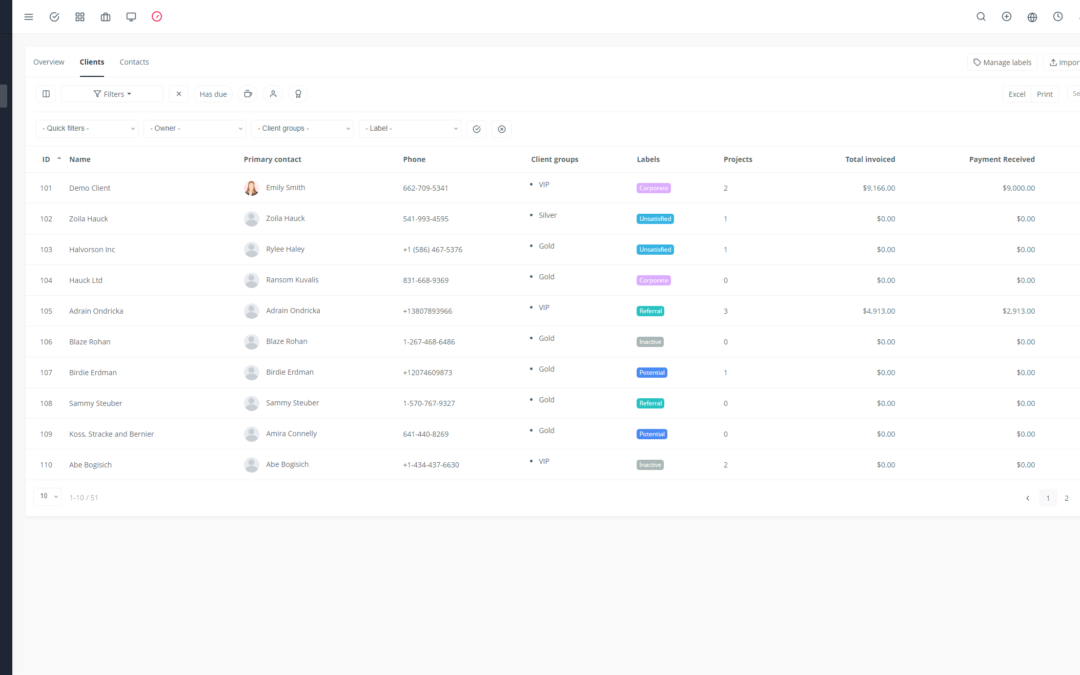In the constantly evolving SaaS world, customer retention has become crucial for long-term success. 📈 Understanding the factors that influence retention and having accurate metrics to measure it are essential for boosting your business growth.
1. Defining Customer Retention in SaaS
Customer retention in SaaS is the ability to keep your customers engaged with your product and encourage them to renew their subscriptions over the long term. 🤝 It translates to a lasting relationship based on satisfaction and perceived value by the customer.
2. Importance of Customer Retention in SaaS
Customer retention is a major asset for SaaS companies for several reasons:
Reduced acquisition costs: Acquiring new customers costs significantly more than retaining existing customers. 💰
Increased revenue: Loyal customers generally spend more and are more likely to recommend your product to their network.
Improved reputation: Satisfied customers contribute to building a positive brand image and making your business more attractive.
Enhanced growth: Customer retention is a driver of sustainable growth and allows you to build a solid and stable customer base. 🚀
3. Key SaaS Customer Retention Metrics
Here are some key metrics to measure customer retention in SaaS:
3.1. Retention Rate
The retention rate measures the percentage of customers who remain subscribed to your product over a given period. 📊 It is calculated by dividing the number of customers at the end of a period by the number of customers at the beginning of the period. A high retention rate signifies that your customers are satisfied and loyal to your product.
3.2. Churn Rate
The churn rate represents the percentage of customers who cancel their subscription to your product during a given period. 📉 A high churn rate signals a problem with customer satisfaction or perceived value.
3.3. Customer Lifetime Value (CLTV)
Customer Lifetime Value (CLTV) measures the total value each customer generates for your business throughout the duration of their relationship with your product. 💰 A high CLTV indicates that your customers are profitable and loyal.
3.4. Renewal Rate
The renewal rate represents the percentage of customers who renew their subscription at the end of their trial period or subscription period. 🔄 It is important to monitor this rate to identify customers at risk of churning.
3.5. Average Number of Active Customers
The average number of active customers measures the number of customers who are actually using your product over a given period. 👤 A high number of active customers means your product is being used and appreciated.
3.6. Customer Satisfaction
Customer satisfaction is an important indicator of retention. 满意度 It can be measured through satisfaction surveys, online reviews, product ratings, or customer service interactions.
3.7. Net Promoter Score (NPS)
NPS is a metric that measures the likelihood that a customer will recommend your product to others. 🗣️ It helps assess customer loyalty and overall satisfaction.
3.8. Customer Feedback
Customer feedback is a gold mine of valuable information for improving your product and customer service. 💬 Analyze positive and negative feedback to identify the strengths and weaknesses of your offering.
3.9. Customer Engagement
Customer engagement measures customer activity and interaction with your product. 👀 It can be measured by usage frequency, time spent using, feature utilization, and interactions with customer service.
3.10. Usage Frequency
Usage frequency measures the number of times customers use your product in a given timeframe. 📈 High usage frequency indicates strong engagement and perceived value.
3.11. Time Spent Using
Time spent using measures the average amount of time customers spend using your product. ⏱️ A high amount of time spent using is a sign of engagement and appreciation.
3.12. Feature Utilization
Feature utilization measures the frequency and extent of usage of the different features of your product. 💯 Complete feature utilization means that customers are taking advantage of all the value of your product.
3.13. Referral Rate
The referral rate measures the percentage of customers who refer your product to other people. 🤝 A high referral rate is an indicator of customer loyalty and satisfaction.
4. Weakness Analysis
Weakness analysis allows you to identify the elements that are harming customer satisfaction and retention. 🔍 Use customer feedback analysis, churn data, and usage analytics to identify weaknesses and address them.
5. Feature Performance Monitoring
Monitoring feature performance allows you to understand how customers use your product and identify the most popular features and those that could be improved. 📊 Analyze feature usage data to optimize your product and meet the needs of your customers.
6. Customer Journey Analysis
Customer journey analysis allows you to understand how customers interact with your product, from signup to regular use. 👣 Identify friction points and opportunities for optimization to improve customer experience and retention.
7. Tools and Platforms for Measuring Customer Retention
Numerous tools and platforms are available to help you measure and track customer retention. 🧰 Here are some examples:
Google Analytics: Excellent tool for tracking website and product usage data.
Mixpanel: Data analytics platform to track customer engagement, journeys, and conversions.
Intercom: Communication and marketing platform to interact with customers, solve problems, and improve retention.
SurveyMonkey: Tool for creating and distributing customer satisfaction surveys and gathering valuable feedback.
Hotjar:* User behavior analytics platform to observe customer interactions on your website and identify weaknesses.
Conclusion
Measuring customer retention is a key element for the sustainable growth of your SaaS business. 📈 By using the appropriate metrics and tools, you can identify the strengths and weaknesses of your offering, improve the customer experience, and maximize retention. 💪 Remember that customer retention is an ongoing process that requires constant effort and attention to the needs of your customers.

